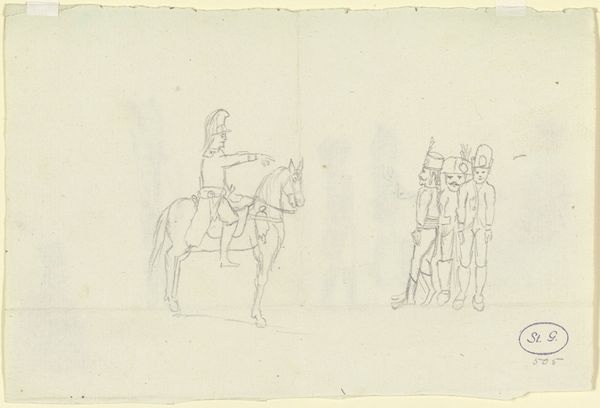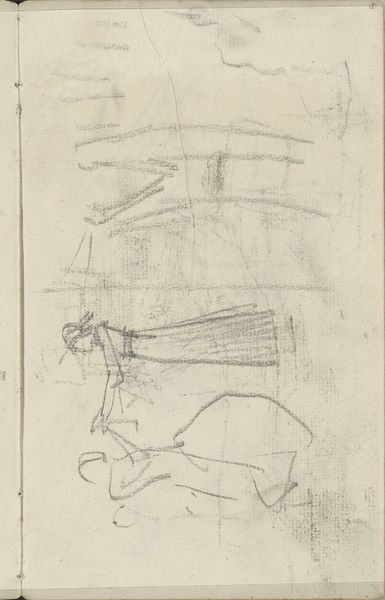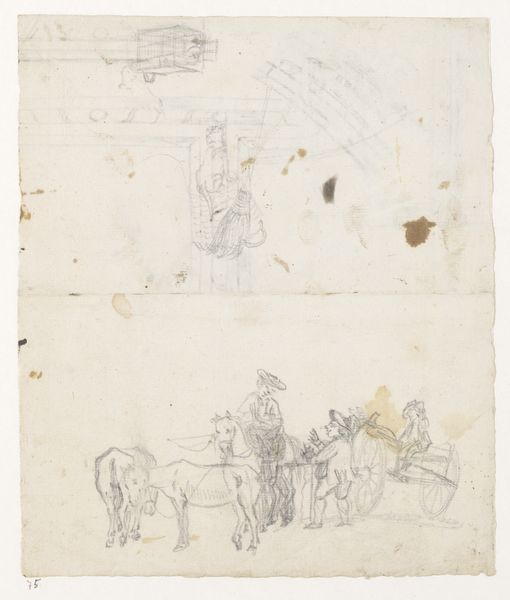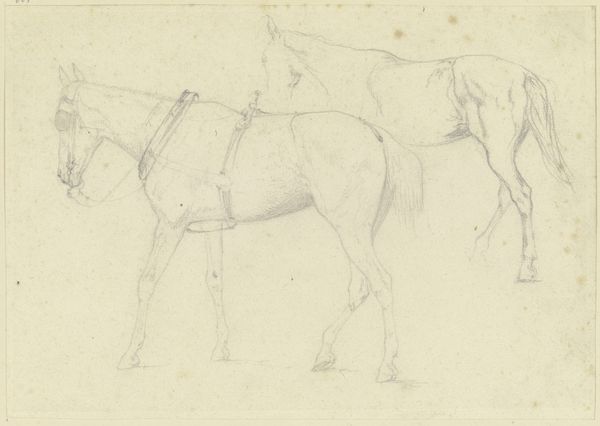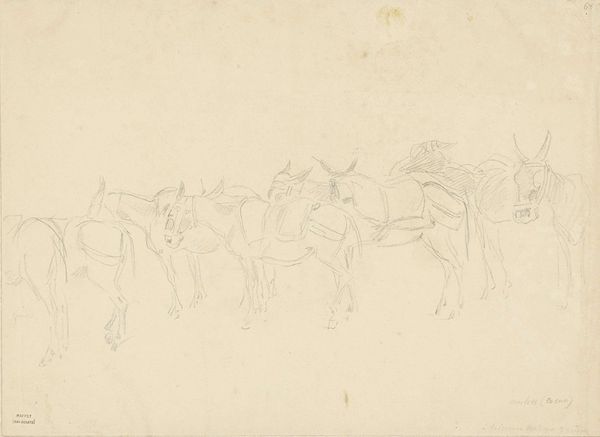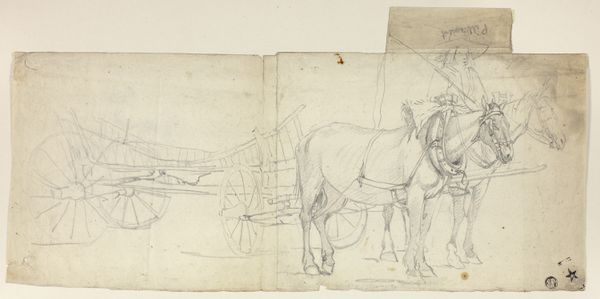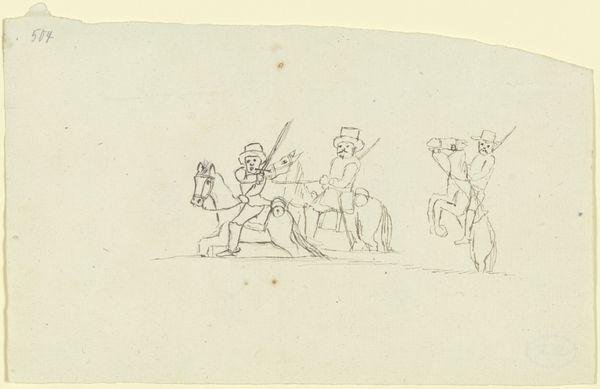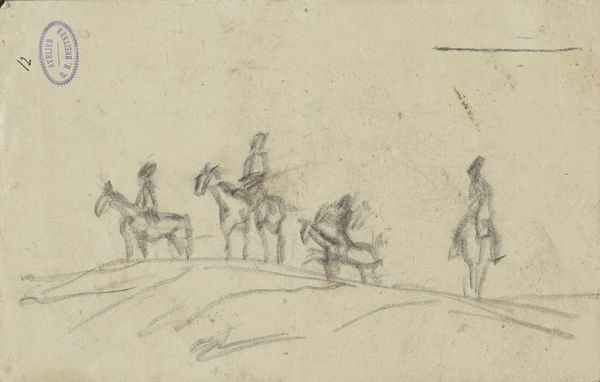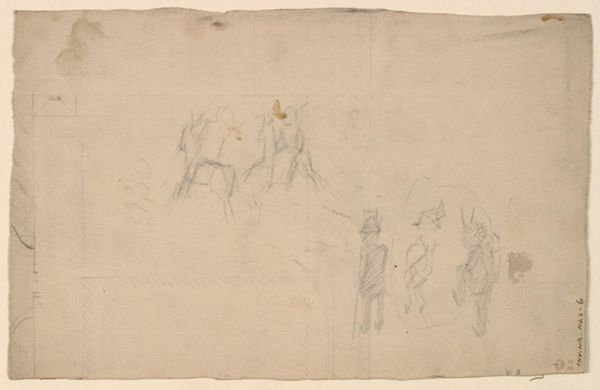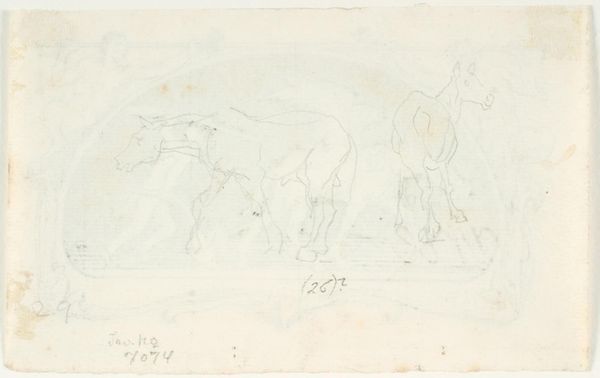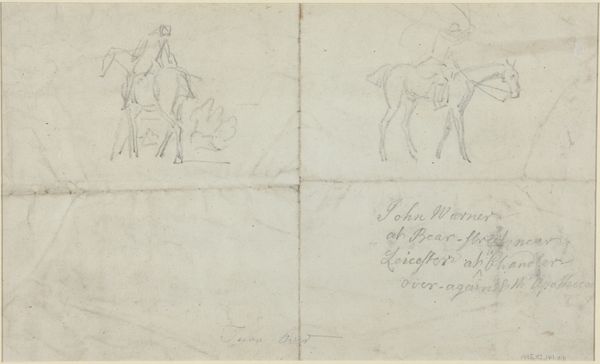
Eselherde, von einem Eselreiter getrieben; eine Frau und ein Mann, in je drei Ansichten c. 1788 - 1803
0:00
0:00
drawing, pencil
#
drawing
#
landscape
#
figuration
#
german
#
pencil
#
15_18th-century
Copyright: Public Domain
Editor: This drawing, "Eselherde, von einem Eselreiter getrieben; eine Frau und ein Mann, in je drei Ansichten," made with pencil around 1788-1803 by Franz Pforr, feels almost like a study of motion. What strikes me is the division of the page, with the donkeys above and those figures…hanging below? How do you interpret this work? Curator: That's an insightful observation. The division immediately raises questions of power dynamics and social hierarchy. We have the "Eselherde" – the herd of donkeys – driven by a rider, suggesting labour and servitude. Then below, those inverted figures... Do you see them as figures of oppression or perhaps a symbolic representation of social inversion, maybe even protest? Editor: I hadn't thought of them as protest. The figures seem almost comical with the stark contrast from above, yet there is a very grim tone if considering oppression and dehumanisation. What societal issues could Pforr be commenting on through this piece? Curator: Given the historical context, we could consider the rise of Enlightenment ideals versus the existing social order. Pforr, as a German artist, might be critiquing the feudal systems that still held sway, using the donkey and the inverted figures as metaphors for the plight of the working class and questioning traditional authority. Consider, also, that the German word "Esel" also suggests stubbornness or foolishness... Editor: So, Pforr may be questioning the 'stubborn foolishness' of those systems and power? The connection between animal and human depictions seems to reinforce a message of marginalisation across both social status and the animal world. Thank you. This offers a lot to think about! Curator: Precisely! And it is in this dialogue, constantly questioning and situating art within these wider intersectional narratives that we truly begin to understand not only the art but ourselves, and the social forces that shape our world.
Comments
No comments
Be the first to comment and join the conversation on the ultimate creative platform.

